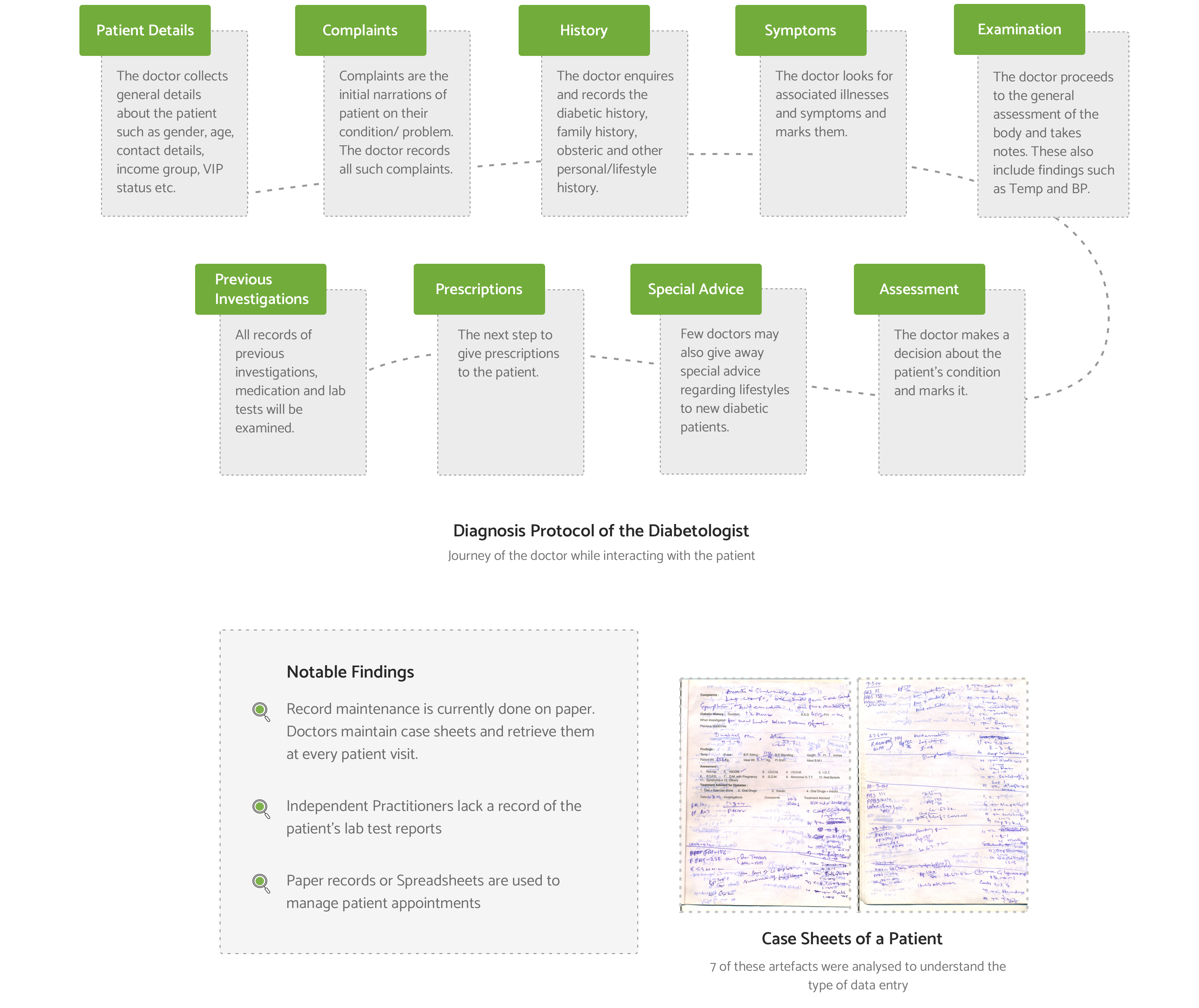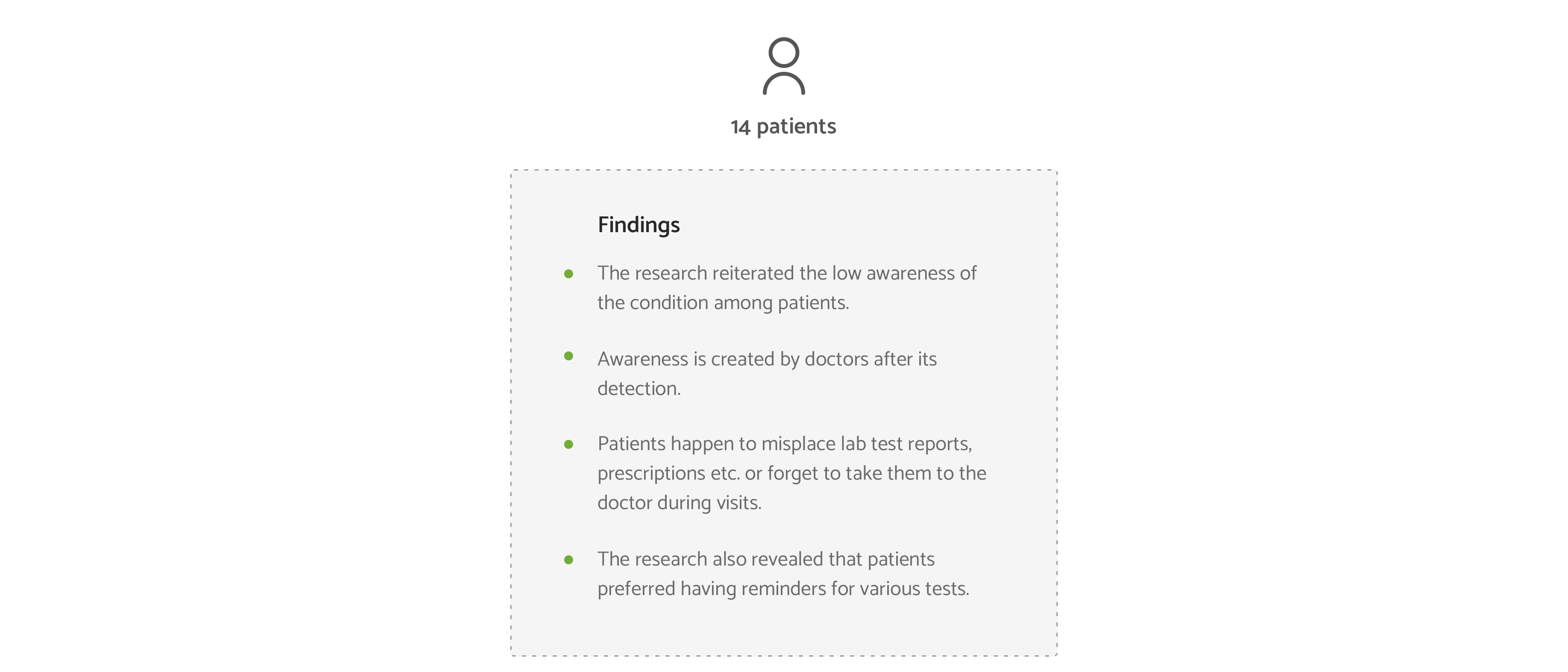e-Health ecosystem.
Designed a e-health ecosystem for effective diabetic care in India
As a part of my Capstone project, I worked with the embedded interactions lab. The system aims to connect various subsystems – doctors, patients and labs primarily. A lean UX methodology was employed to design the doctor’s end of the system and a user-centred approach will be used to design the patient’s end of the system.
Duration: Sep 2015 - Mar 2015
Advisor: Dr. Keyur Sorathia, Associate Professor, IIT Guwahati

Diabetes in India
Diabetes is a metabolic disease which effects millions of people around the globe. Due to genetic and environmental factors, limited and fragmented healthcare facilities, lack of connections among sub-systems and numerous other societal and patient related barriers; India is witnessing an explosion in the number of diabetic patients.


The explosion of diabetes combined with significant morbidities and mortality due to enormous burden associated with these complications underscores the urgent need for prevention and control programmes.
Why e-Health?
The conventional healthcare system due to its drawbacks is unable to curb the increasing effect of diabetes and hence there exists a pressing need for strengthening the healthcare system. E-Health can help removing patient related barriers by providing improved patient care, increased patient participation, improved care co-ordination, cost effectiveness and better storage of health records.
Process Overview

Existing e-Health Services
An audit was conducted for notable e-health services for diabetic care delivery - 5 patient facing and 2 doctor facing. Various mobile applications are available for diabetic patients to track various parameters such as blood glucose levels, diet and activity. Though several private applications are available for doctors to maintain patients records, there were no notable public applications.

The 'Expert' Interviews
One-on-One interviews were conducted with two Diabetologists. The aim of the expert interviews was to understand how care is being delivered, the diagnosis protocol used, parameters used to monitor patients and certain conventions related to prescriptions and tests. The current scenario of maintaining patient records and managing appointments was also observed. Several artefacts that inform about conventions in lab tests, prescriptions and diet charts were collected.

The 'Patient' interviews
Online surverys and Telephonic Interviews were conducted with 14 diabetic patients.

The Solution
We introduce 'Aloe' - a system which allows the seamless integration of health information among stakeholders (patients, doctors, clinical labs) in the diabetic e-health ecosystem which in turn helps provide effective diabetic care.

Design Concept
We introduce 'Aloe' - a system which allows the seamless integration of health information among stakeholders (patients, doctors, clinical labs) in the diabetic e-health ecosystem which in turn helps provide effective diabetic care.

Prototypes
Coming soon..